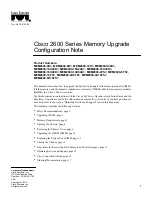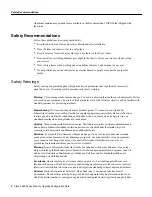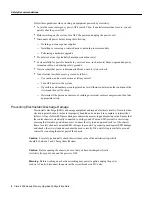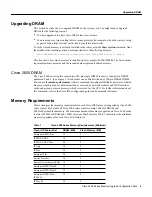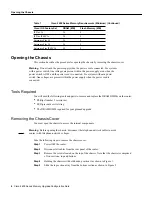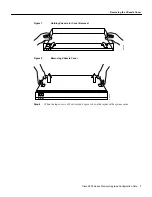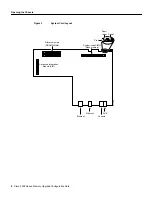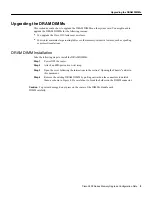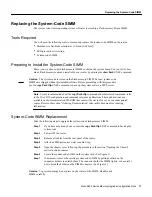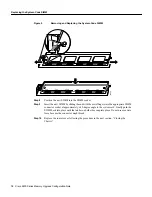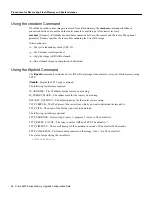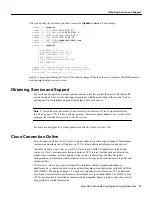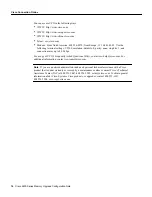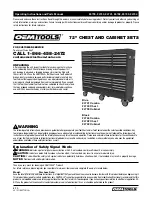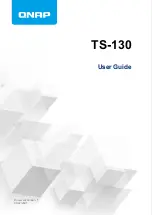
Cisco 2600 Series Memory Upgrade Configuration Note 5
Upgrading DRAM
Upgrading DRAM
This section describes how to upgrade DRAM on the system card. You might need to upgrade
DRAM for the following reasons:
•
You have upgraded to a new Cisco IOS feature set or release.
•
You are using very large routing tables or many protocols (for example, when the router is set up
as part of both a large external network and your internal network).
To see how much memory is currently installed in the router, enter the show version command. Near
the middle of the resulting output, a message similar to the following displays:
Cisco XXXX(68030) processor (revision X) with 4092K/2048K bytes of memory.
This line shows how much memory is installed (in this example, 4092K/2048K). The first number
represents primary memory and the second number represents shared memory.
Cisco 2600 DRAM
The Cisco 2600 series routers contain two 100-pin single DIMM sockets (or banks) for DRAM,
numbered 0 and 1. (See Figure 3.) Each socket can be filled with a dual, 100-pin DRAM DIMM.
You can use the memory-size iomem software command to configure DRAM as a mixture of shared
memory, which is used for data transmitted or received by network modules and WAN interface
cards, and primary or main memory, which is reserved for the CPU. For further information about
this command, refer to the Cisco IOS configuration guides and command references.
Memory Requirements
This section provides memory requirements for each Cisco IOS feature set supported by Cisco 2600
series routers. By default, all Cisco 2600 series routers contain 16 MB of DRAM and
4 MB of System Flash memory. The maximum amount of memory supported on Cisco 2600 series
routers is 64 MB of DRAM and 16 MB of system Flash memory. Table 1 summarizes the minimum
memory requirement for each Cisco IOS feature set.
Table 1
Cisco 2600 Series Memory Requirements (Minimum)
Cisco IOS Feature Set
DRAM (MB)
Flash Memory (MB)
Enterprise/APPN/Plus
32
8
IP/IPX/AT/DEC
16
8
IP/IPX/AT/DEC Plus
24
8
IP Only
16
4
IP Plus
20
8
Enterprise Plus
24
8
Service Provider
16
4
Remote Access Server (RAS)
16
4
Enterprise/APPN/Plus 40
32
8
Enterprise/APPN/Plus 56
32
8
Enterprise/APPN/Plus
IPSEC 56
32
8
IP Plus 40
20
8

